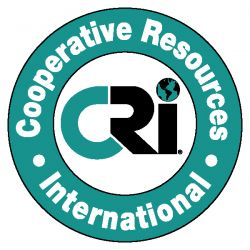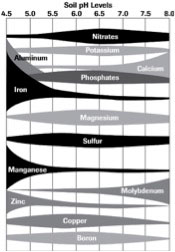
“Plant tissue analysis is especially helpful in managing micronutrients since many of the visual symptoms of micronutrient deficiencies look alike,” states Dr. Jim Friedericks, AgSource Laboratories’ Outreach and Education Advisor. “For example, manganese (Mn) is often overlooked as a growth limiting micronutrient because the deficiency symptoms are so similar to iron’s, yet manganese crop deficiencies are just as prevalent as iron deficiencies and many times occur together.”
Sulfur and nitrogen deficiencies also appear similar in young corn plants. If the deficiency is mistaken to be nitrogen, a side-dress application of N may worsen the deficiency by creating a wider N:S ratio in the plant. Correctly identified low sulfur content could be easily remedied with a soil or foliar application.
Another example of when plant tissue testing can be helpful is to check for molybdenum (Mo) which is required for nodule formation in nitrogen fixing crops. What visually appears as nitrogen deficiency in alfalfa may in fact be inadequate supply of molybdenum.
Plant analysis gives you information that cannot be determined any other way. The plant analysis shows which nutrient elements are adequate and which are deficient, excessive or even potentially toxic, he explained.

“One benefit of timely tissue testing is that crop deficiencies can be evaluated and easily corrected before the stand matures,” notes Friedericks.
Zinc is one of the most common micronutrient deficiencies in the cornbelt, but it’s essential for several plant processes including seed formation. If identified in time, zinc deficiencies can be corrected through foliar applications and adjustments made to fertilizer applications for the crops that follow.
Manganese is a micronutrient for which both toxicities and deficiencies can occur. Manganese availability is extremely sensitive to soil pH, soil oxygen, and temperature. Toxicity can occur in poorly drained acidic soil. Low temperatures however, reduce plant root growth and nutrient uptake as well as the solubility of manganese. Deficiencies can be caused by high soil pH and are best corrected with band-applying manganese fertilizer in combination with acid-forming fertilizers such as MAP and ammonium sulfate.

Figure 2: pH levels affect micronutrient availability.
The results from plant tissue samples are typically expressed in comparison to the range of nutrient concentrations sufficient for that plant at that growth stage. Because these ranges shift with the growth of the plant it is important to identify the growth stage when submitting a plant sample to the laboratory.
Friedericks offers the following tips for getting the best possible results from plant tissue testing:
1) For one time sampling/diagnostic testing, time it right. To have an effect on this growing season, corn plants should be in the 8-leaf to 12- leaf stage, soybean plants can be submitted from 4-inches to 8-inches tall and alfalfa from 6-inches to flowering. Use these results for a rescue nutrient application for the current crop or to modify nutrient applications for the next growing season. Pick the correct plant part as described in the online plant sampling guide available at www.agsource.com/PlantTissue.
2) Select the best, most representative samples. Never select diseased, drought stressed or damaged plants. Pick plants that most closely represent actual field conditions.
3) Collect the proper plant part and amounts. Pick at least half a paper lunch bag full of samples and choose leaves from the middle of the plant. Never send bottom leaves or immature leaves.
4) Handle the samples properly. Label your sample bags, make sure the labels match your submittal forms and send them promptly. Pack the shipping box loosely to include some air space. If possible, collect and ship the samples the same day. If not, store samples in a refrigerator.
Plant tissue analysis should be a routine part of every crop producer's nutrient management program as a way to accurately measure a crop’s health and optimize production. To order supplies and for a complete sampling guide go to the AgSource Laboratories’ website at www.agsource.com/PlantTissue.
AgSource is a leader in agricultural, turf and environmental laboratory analysis and information management services, with facilities in Iowa, Nebraska, Oregon and Wisconsin. A division of Cooperative Resources International, AgSource Laboratories provides testing services to clients in the United States and across the globe. Learn more at www.AgSource.com.

